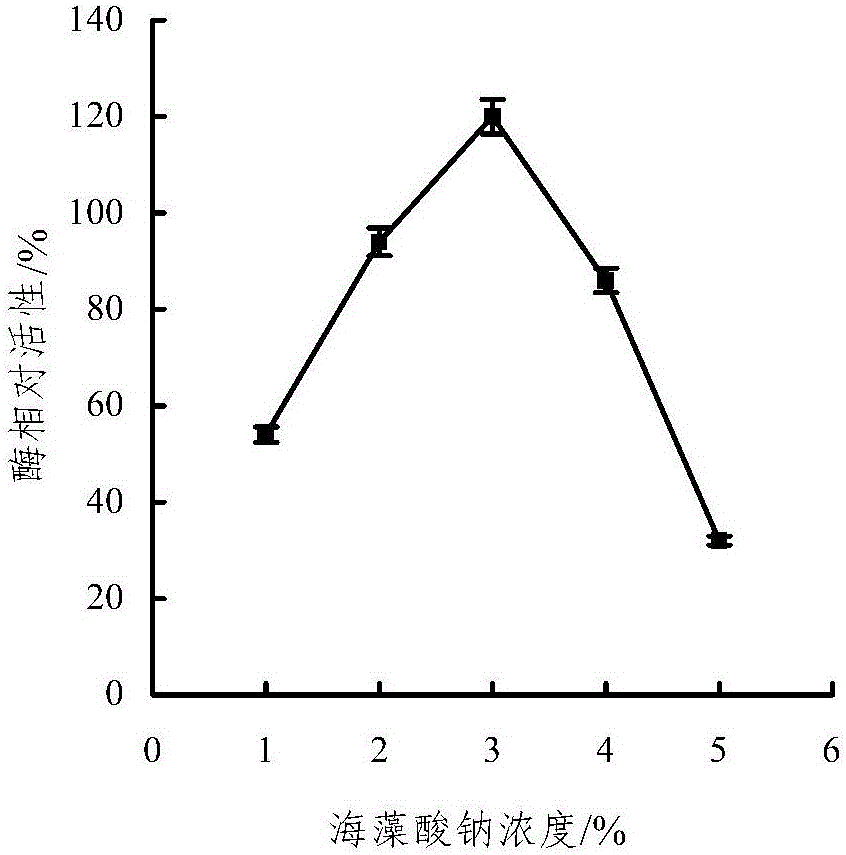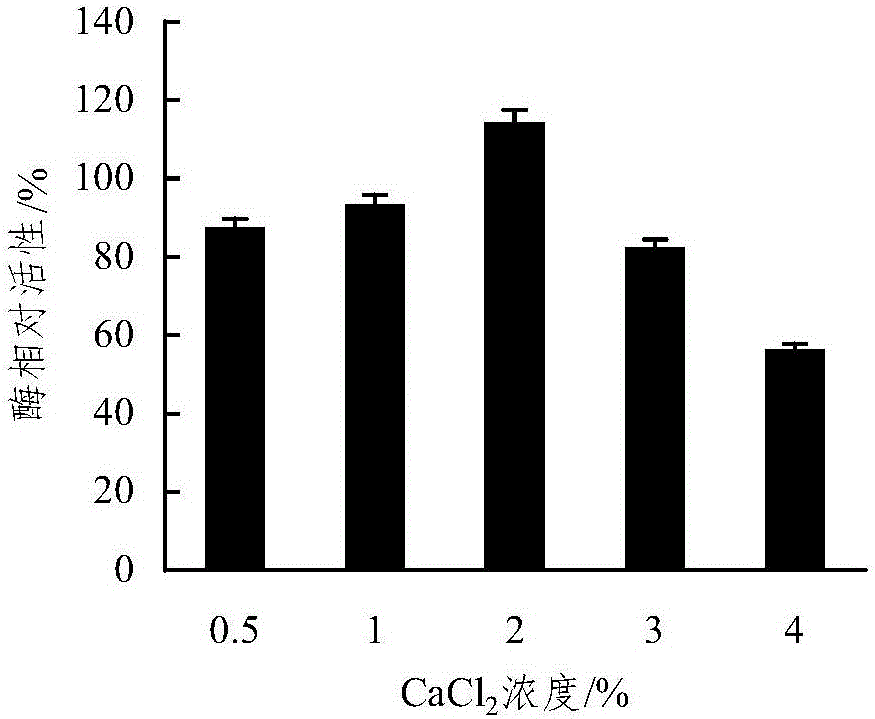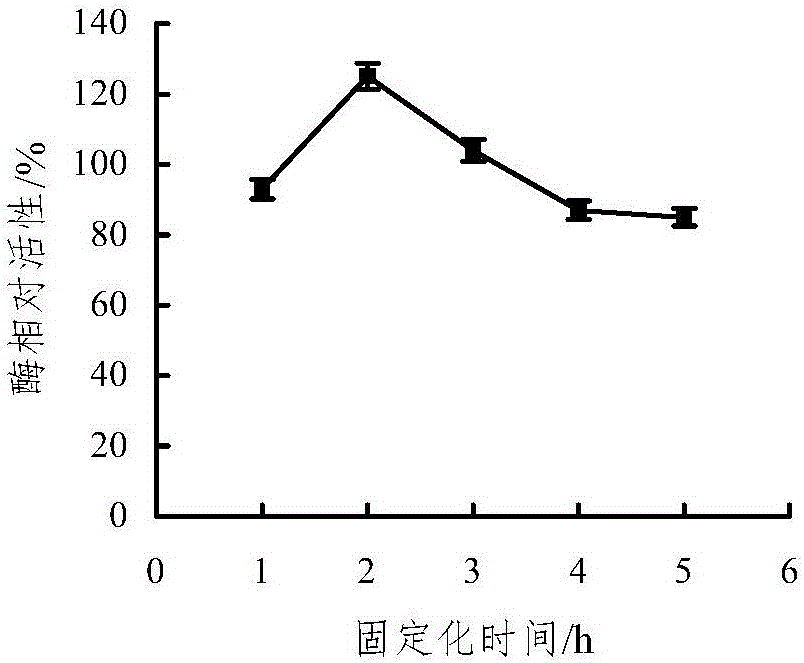Embedding and co-immobilization method of aldehyde ketone reductase and glucose dehydrogenase
A technology of glucose dehydrogenase and aldehyde and ketone reductase, which is applied to the direction of multi-enzyme system fixed on/in it, can solve the problems of non-reusable and poor stability of free enzymes, and achieve the reduction of repeated use, Effects of property improvement and catalytic activity improvement
- Summary
- Abstract
- Description
- Claims
- Application Information
AI Technical Summary
Problems solved by technology
Method used
Image
Examples
Embodiment 1
[0036] Embodiment 1 prepares aldehyde and ketone reductase
[0037] The nucleotide sequence shown in SEQ ID NO.1 was ligated with the vector pET28a, the ligated product was transformed into E.coli DH5α competent cells, and a single colony was picked for PCR verification to obtain positive clones, and the pET28a-Lek plasmid was obtained using a plasmid extraction kit. Then the recombinant plasmid was introduced into E.coli BL21(DE3) to obtain pET28a-Lek-E.coli BL21(DE3) strain.
[0038] The pET28a-Lek-E.coli BL21(DE3) strain was inoculated in LB liquid medium and cultivated overnight at 37°C. Transfer the bacterial solution to 1L of LB medium containing kanamycin (100 μg / mL) according to the volume concentration of 1% inoculum, culture at 37 ° C and 200 rpm until the OD600 reaches 0.6, and add IPTG to the culture solution to make it final The concentration was 0.1 mM, and the expression was induced for 12-16 hours at 25°C and 150 rpm. Centrifuge at 4°C and 8000rpm for 15min, ...
Embodiment 2
[0041] Embodiment 2 prepares glucose dehydrogenase
[0042] The nucleotide sequence shown in SEQ ID NO.2 was ligated with the vector pET22b, and the ligated product was transformed into E.coli DH5α competent cells, and a single colony was picked for PCR verification to obtain positive clones, and the pET22b-GDH104 plasmid was obtained using a plasmid extraction kit. Then the recombinant plasmid was introduced into E.coli BL21(DE3) to obtain pET22b-GDH104-E.coli BL21(DE3) strain.
[0043] The successfully constructed pET22b-GDH104-E.coli BL21(DE3) strain was inoculated in liquid LB medium containing ampicillin (100 μg / mL), and cultured overnight at 37° C. and 220 rpm. Take 10 mL of the bacterial liquid and transfer it to 1 L of LB medium, shake and culture at 37°C, 200rpm until the OD600 reaches 0.6, add IPTG to the culture medium to make the final concentration 0.1mM, and induce expression at 25°C, 150rpm for 12-16h. The bacterial cells were collected by centrifugation, washe...
Embodiment 3
[0046] Embodiment 3 makes co-immobilized enzyme with free double enzyme
[0047] Mix 0.04ml of the 7.7mg / mL aldehyde and ketone reductase solution obtained in Example 1 and 0.06ml of the 6.25mg / mL glucose dehydrogenase solution obtained in Example 2, and add 1mL of 3% ketone reductase solution to the mixed solution. Sodium alginate aqueous solution (the total weight of aldehyde and ketone reductase and glucose dehydrogenase is 0.683 mg / ml based on the volume of sodium alginate aqueous solution), stir well to mix the double enzyme solution and sodium alginate aqueous solution evenly, and draw the mixed solution slowly into the syringe Into 20ml mass concentration 2% CaCl 2 In the aqueous solution, stir continuously during the dropwise addition process. After the end, let it stand in a refrigerator at 4°C for 2 hours, wash with distilled water 2-3 times, and dry it with a vacuum pump to obtain immobilized gel particles, that is, co-immobilized enzymes.
[0048] Table 1 Co-immob...
PUM
 Login to View More
Login to View More Abstract
Description
Claims
Application Information
 Login to View More
Login to View More - R&D
- Intellectual Property
- Life Sciences
- Materials
- Tech Scout
- Unparalleled Data Quality
- Higher Quality Content
- 60% Fewer Hallucinations
Browse by: Latest US Patents, China's latest patents, Technical Efficacy Thesaurus, Application Domain, Technology Topic, Popular Technical Reports.
© 2025 PatSnap. All rights reserved.Legal|Privacy policy|Modern Slavery Act Transparency Statement|Sitemap|About US| Contact US: help@patsnap.com



